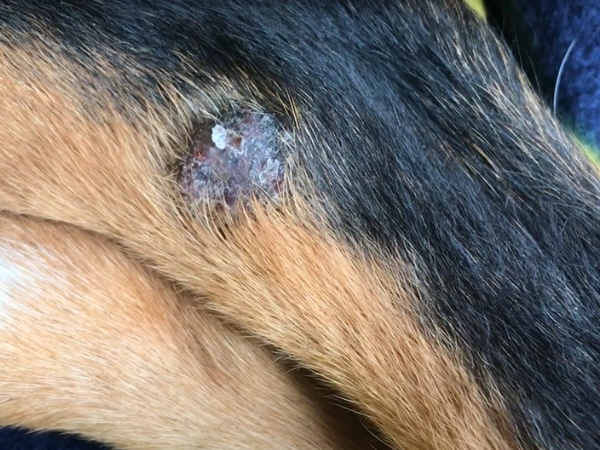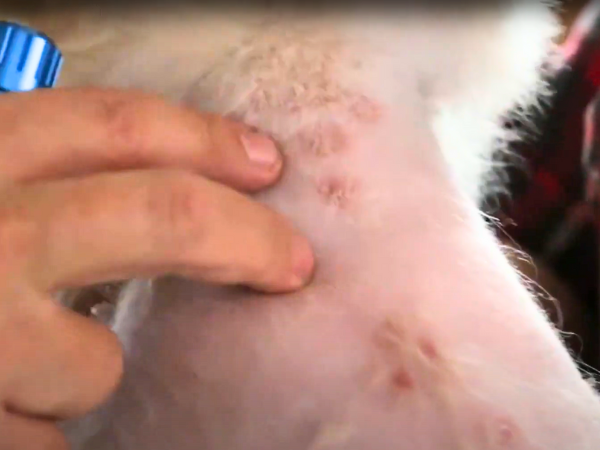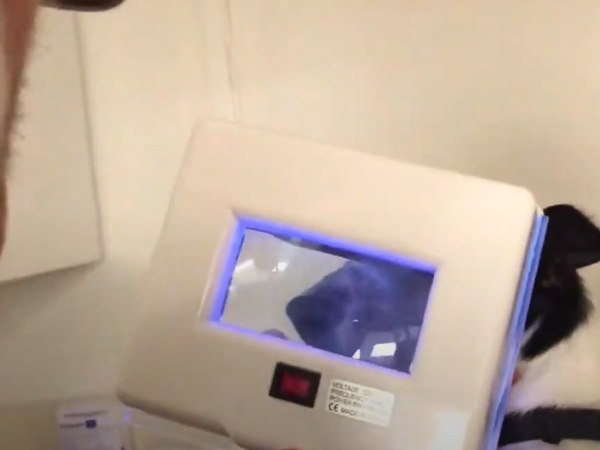Ringworm in dogs can be confusing, especially since it isn’t caused by a worm at all. Instead, it’s a fungal infection that affects the skin, coat, and sometimes even nails.
While it’s treatable, there are many surprising facts about dog ringworm that every pet owner should understand. Knowing them can help you spot symptoms early and keep your pup healthy.
Not A Worm, But A Fungus
Many people believe ringworm is a worm because of its name. The truth is, ringworm is caused by a fungus, not a worm. This fungus is a type of dermatophyte. It feeds on keratin, which is found in your dog’s skin, hair, and nails.
This fungal infection creates a circular, red, itchy rash. This rash often looks like a worm-shaped ring, which causes the confusion. Here are some key points to understand:
- Ringworm is contagious and can spread to other pets and humans.
- The fungus lives on the surface of the skin and in hair follicles.
- Infected dogs lose hair in patches, often with scaly or crusty skin.
- Ringworm can survive on objects like bedding, brushes, and furniture.
Knowing that ringworm is a fungus and not a worm helps avoid wrong treatments. Use antifungal medications, not worm medicine. Clean your dog’s environment to stop the fungus spreading.
The Main Symptom Is Hair Loss
Hair loss caused by ringworm typically appears as circular patches. These patches are clear and easy to spot on your dog’s coat. The skin within the patch may be red, scaly, and itchy. This irritation can make your dog uncomfortable and restless. The patches often start small and grow larger if left untreated.
Here are some important points about these hair loss patches:
- Shape: Usually round or oval-shaped.
- Size: Starts small, about the size of a coin, then expands.
- Texture: Skin inside the patch may feel rough or flaky.
- Color: Redness or inflammation is common.
- Itchiness: Dogs may scratch or lick the affected area.
Recognizing these signs early helps protect your dog’s health. It also stops the infection from spreading to other pets or people. Watch for these symptoms during regular grooming or playtime.

Highly Contagious By Contact
Ringworm is caused by a group of fungi known as dermatophytes. It is transmitted through direct contact with an infected animal. This means touching or playing with a dog that has ringworm can pass the infection. Puppies and older dogs are more vulnerable because their immune systems are weaker.
The fungus can also spread from a contaminated environment. Places like bedding, grooming tools, collars, and carpets can carry fungal spores. These spores are tiny and invisible to the naked eye.
Fungal spores can survive on surfaces for months. This long survival time makes cleaning and disinfecting very important. Even if the infected dog is no longer around, the spores may still infect another pet.
Puppies Are Most Susceptible
A puppy’s immune system is not fully developed. Their body cannot fight infections as well as adult dogs. This makes puppies more prone to infection, including ringworm. The fungus spreads quickly on their soft skin and thin coat.
Here are some reasons why puppies catch ringworm more easily:
- Immature immune response allows the fungus to grow rapidly.
- Close contact with other animals helps spread the infection.
- Puppies often explore with their mouths, increasing exposure.
- Stress from new environments weakens their defenses.
Senior dogs and dogs with compromised immune systems are also at risk. They may catch ringworm if their body cannot control the fungal growth properly.

It’s A Zoonotic Disease
People can get ringworm from their pets. Dogs with ringworm shed fungal spores through their skin and hair. These spores can stick to human skin and cause infection. Children are especially at risk.
On humans, ringworm usually shows as an itchy, red ring-shaped rash. This rash can appear anywhere but often shows on hands, arms, or face. The infection can spread if not treated quickly.
- Symptoms in humans: Red, itchy, circular rash.
- Common sites: Hands, arms, face.
- High risk groups: Children and people with weak immune systems.
Good hygiene and early treatment prevent spread. Wash hands after petting dogs. Avoid sharing towels or bedding. Check pets regularly for skin issues.
Diagnosis Requires Lab Work
Ringworm can look like many other skin issues in dogs. Visual inspection alone is often inaccurate. Many skin problems cause hair loss, redness, and itching. These symptoms can confuse even experienced pet owners.
A vet will perform a fungal culture to confirm the presence of ringworm. This test involves taking a sample from the dog’s skin or hair. The sample is placed on special media to see if the fungus grows.
A Wood’s lamp can sometimes make it glow. This tool shines ultraviolet light on the dog’s skin. Some types of ringworm fungi fluoresce under this light. But not all fungi glow, so this test is not always reliable alone.

Treatment Is A Multi-step Process
Treating ringworm in dogs involves both topical and oral medication. Topical treatments like antifungal creams or shampoos kill the fungus on the skin surface. Oral medication helps clear the infection from inside the body.
The dog’s coat is often clipped to remove spores. Clipping the fur helps get rid of fungal spores stuck in the hair. It also allows medicine to reach the skin easily. Keeping the coat short reduces the chance of spreading the infection to other pets or people.
| Treatment Step | Purpose | Duration |
|---|---|---|
| Coat clipping | Remove fungal spores and allow medicine to reach skin | Once or as needed |
| Topical medication | Kill fungus on skin surface | Several weeks to months |
| Oral medication | Clear infection inside the body | Several weeks to months |
| Environmental cleaning | Prevent re-infection and spread | Throughout treatment |
Treatment can take several weeks to months. Ringworm fungi grow slowly, so medicines need time to work fully. Stopping treatment early can cause the infection to come back.
Environmental Cleaning Is Crucial
Vacuuming and sanitizing all surfaces is necessary to remove ringworm spores. These spores survive on floors, rugs, and furniture. After vacuuming, use a disinfectant to kill the spores left behind.
Wash all bedding, toys, and grooming tools regularly. These items come in close contact with your dog’s skin. Spores can cling to fabric and plastic surfaces.
| Cleaning Task | Recommended Action |
|---|---|
| Vacuuming | Daily vacuum carpets, rugs, and floors |
| Sanitizing Surfaces | Use diluted bleach solution (1 part bleach to 10 parts water) |
| Bedding & Toys | Wash in hot water weekly |
| Grooming Tools | Disinfect with bleach solution after every use |
Eliminating spores is key to prevention. Clean your dog’s environment thoroughly and often. This stops the fungus from spreading and protects your pet’s health.
Prevention Is Based On Cleanliness
Practice good hygiene and grooming by brushing your dog’s coat often to remove dirt and loose hair. Bathing your dog with antifungal shampoo can help if your vet recommends it.
Avoid contact with infected animals. Ringworm spreads by touch. Keep your dog away from pets showing skin problems. If your dog meets other animals, check their health regularly.
Regularly clean your dog’s living areas. Wash bedding, blankets, and toys in hot water weekly. Vacuum floors and furniture to remove loose hair and skin flakes.
| Action | Why It Helps |
|---|---|
| Brush coat regularly | Removes dirt and loose spores |
| Bath with antifungal shampoo | Kills fungi on skin |
| Keep away from infected pets | Stops direct spread of ringworm |
| Clean bedding and toys weekly | Removes fungi from surfaces |
| Vacuum and disinfect living areas | Reduces environmental spores |
Following these steps creates a cleaner environment that protects your dog. Cleanliness lowers the chance of ringworm spreading in your home.

